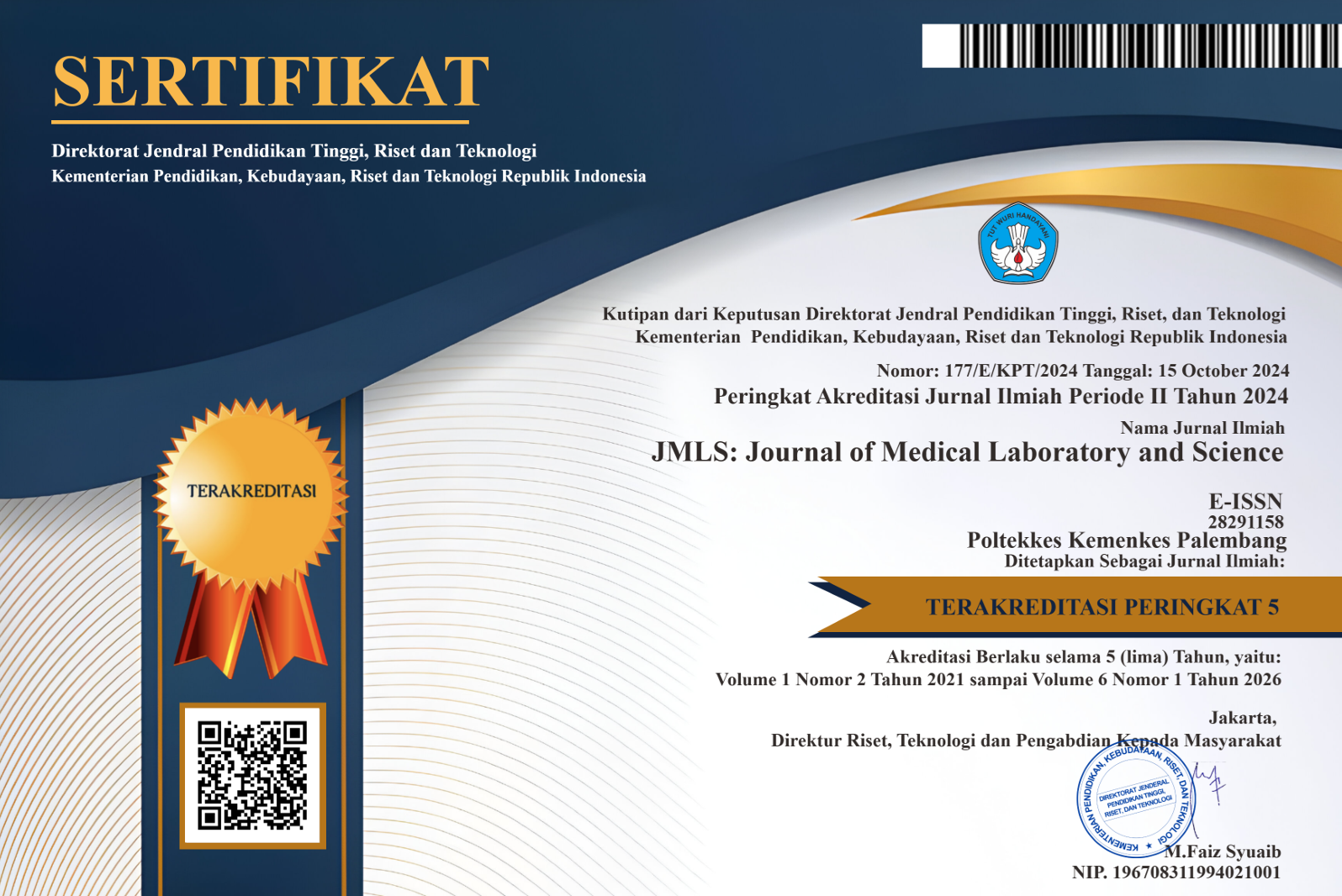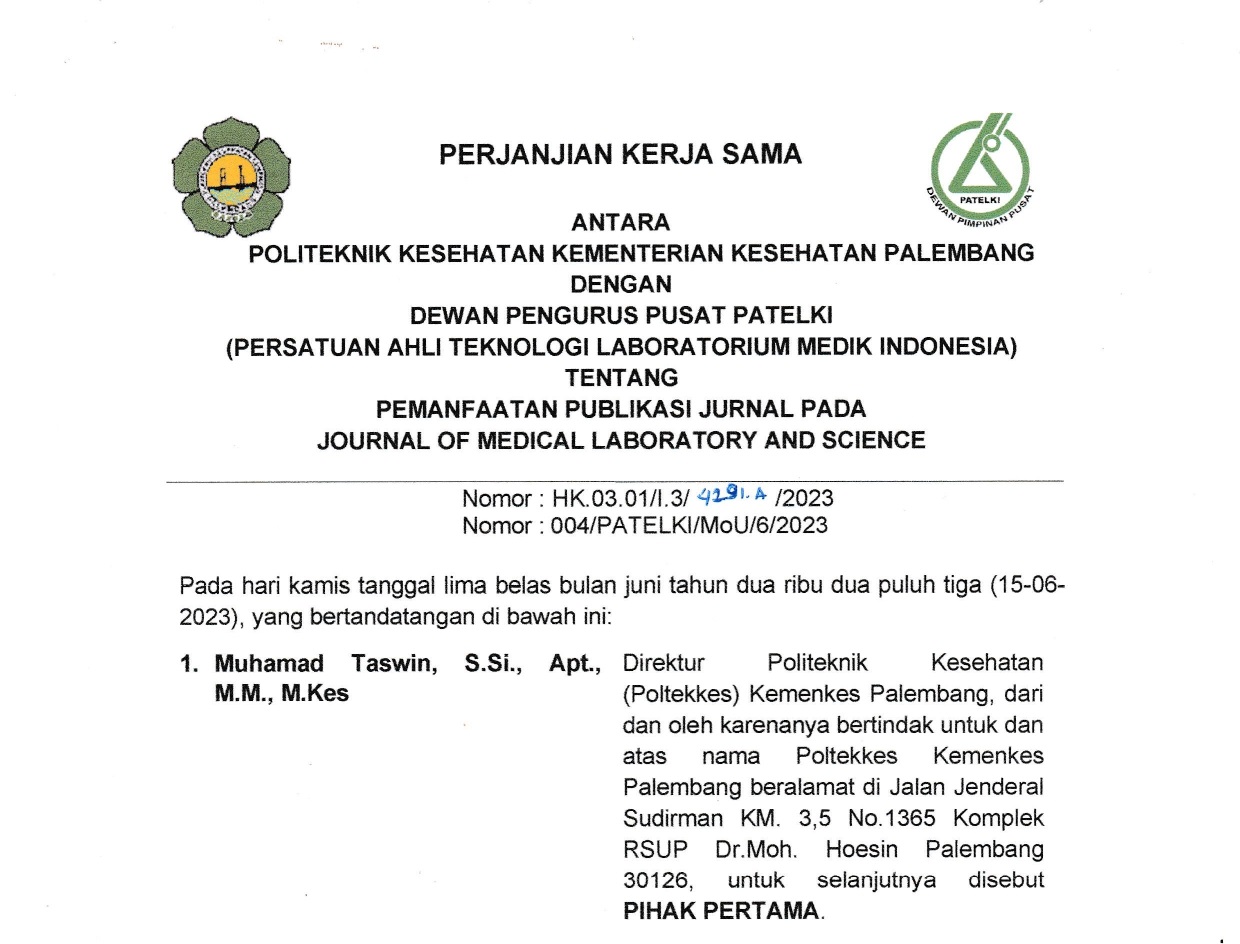KARAKTERISTIK PENDERITA DIABETES MELITUS DENGAN HIPERTENSI TERHADAP KADAR ASAM URAT DI RS BHAYANGKARA PALEMBANG
-
Abstract
ABSTRAK
Latar Belakang : Komplikasi diabetes menyebabkan terjadi proses oksidasi Keadaan ini merusak dinding bagian dalam dari pembuluh darah, dan menarik lemak yang jenuh menempel pada dinding pembuluh darah, sehingga reaksi inflamasi terjadi yang membuat dinding pembuluh darah menjadi keras, kaku dan akhirnya timbul penyumbatan yang mengakibatkan perubahan tekanan darah yang dinamakan hipertensi. Selanjutnya hipertensi akan menurunkan aliran darah ke ginjal, sehingga menstimulasi reabsorpsi asam urat juga memperbesar risiko penyakit mikrovaskuler yang dapat memicu iskemia jaringan.Tujuan Penelitian: Mengetahui kadar asam urat pada penderita asam urat dengan hipertensi. Metode Penelitian: Penelitian deskriptif dengan pendekatan cross sectional. Penelitian ini dilaksanakan pada Februari – Mei 2020 Sampel pasien dm tipe 2 dengan hipertensi di Rumah Sakit bhayangkara Palembang Tahun 2020. Hasil Peneltian : dari 37 pasien kadar asam urat tinggi sebanyak 16 orang (42,3%). Berdasarkan umur,> 50 tahun diperoleh 11 orang (47,8 %) kadar asam urat tinggi dan ≤ 50 tahun diperoleh 5 orang (35,7%) kadar asam urat tinggi. Berdasarkan jenis kelamin laki-laki 14 orang (66,7%) kadar asam urat tinggi dan perempuan 2 orang (16,7%) kadar asam urat tinggi. Berdasarkan Indeks masa tubuh kategori normal 4 orang (26,7%) kadar asam urat tinggi, kategori kurus 1 orang (16,7%) kadar asam urat tinggi dan kategori gemuk 11 orang (31,3%) kadar asam urat tinggi. Kesimpulan : masih ditemukannya kadar asam urat yang tinggi pada penderita diabetes melitus tipe 2 dengan hipertensi.
Kata kunci : Diebetes, Hipertensi, Asam Urat
ABSTRACT
Background: Complications of diabetes occur because a high change in blood sugar will stick to the walls of blood vessels and there is an oxidation. This condition damages the inner wall of the blood vessels, and pulls the saturated fat attached to the blood vessel walls, so that inflammatory reactions occur, stiff and eventually arises blockages resulting in a change of blood pressure called hypertension. Further hypertension will lower the blood flow to the kidneys, thus stimulating the reabsorption of uric acid also enlarges the risk of microvascular diseases that can trigger tissue ischemia. Research Purposes: To describe the uric acid level in type 2 Diabetes mellitus patients with hypertension. Research method: It was a descriptive research with cross sectional approach. The study was held in February – May 2020. Sample was type 2 DM patient with hypertension at Bhayangkara Hospital Palembang year 2020. Results: 16 of 37 (42.3%) patients have high uric acid levels. Based on age, 11 people (47.8%) among > 50 years have high uric acid levels and 5 people (35.7%) among ≤ 50 years have high uric acid levels. Based on gender, 14 (66.7%) male respondents habe high uric acid levels and 2 women (16.7%) have high uric acid levels. Based on body mass index, 4 people (26.7%) with normal BMI have high uric acid levels, 1 skinny person (16.7%) has high uric acid levels and 11 respondents of fat category (31.3%) have high uric acid levels. Conclusion: Patients with diabetes mellitus type 2 with hypertension have high levels of uric acid.
Keywords: Diabetics,Hypertension, Gout
Copyright (c) 2021 Journal of Medical Laboratory and Science

This work is licensed under a Creative Commons Attribution-ShareAlike 4.0 International License.
Authors who publish with this journal agree to the following terms:
- Authors retain copyright and grant the journal right of first publication with the work simultaneously licensed under a Creative Commons Attribution License that allows others to share the work with an acknowledgement of the work's authorship and initial publication in this journal.
- Authors are able to enter into separate, additional contractual arrangements for the non-exclusive distribution of the journal's published version of the work (e.g., post it to an institutional repository or publish it in a book), with an acknowledgement of its initial publication in this journal.
- Authors are permitted and encouraged to post their work online (e.g., in institutional repositories or on their website) prior to and during the submission process, as it can lead to productive exchanges, as well as earlier and greater citation of published work














